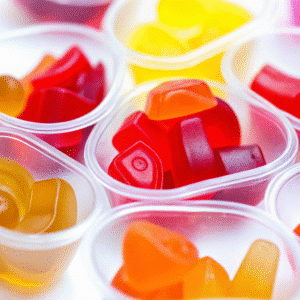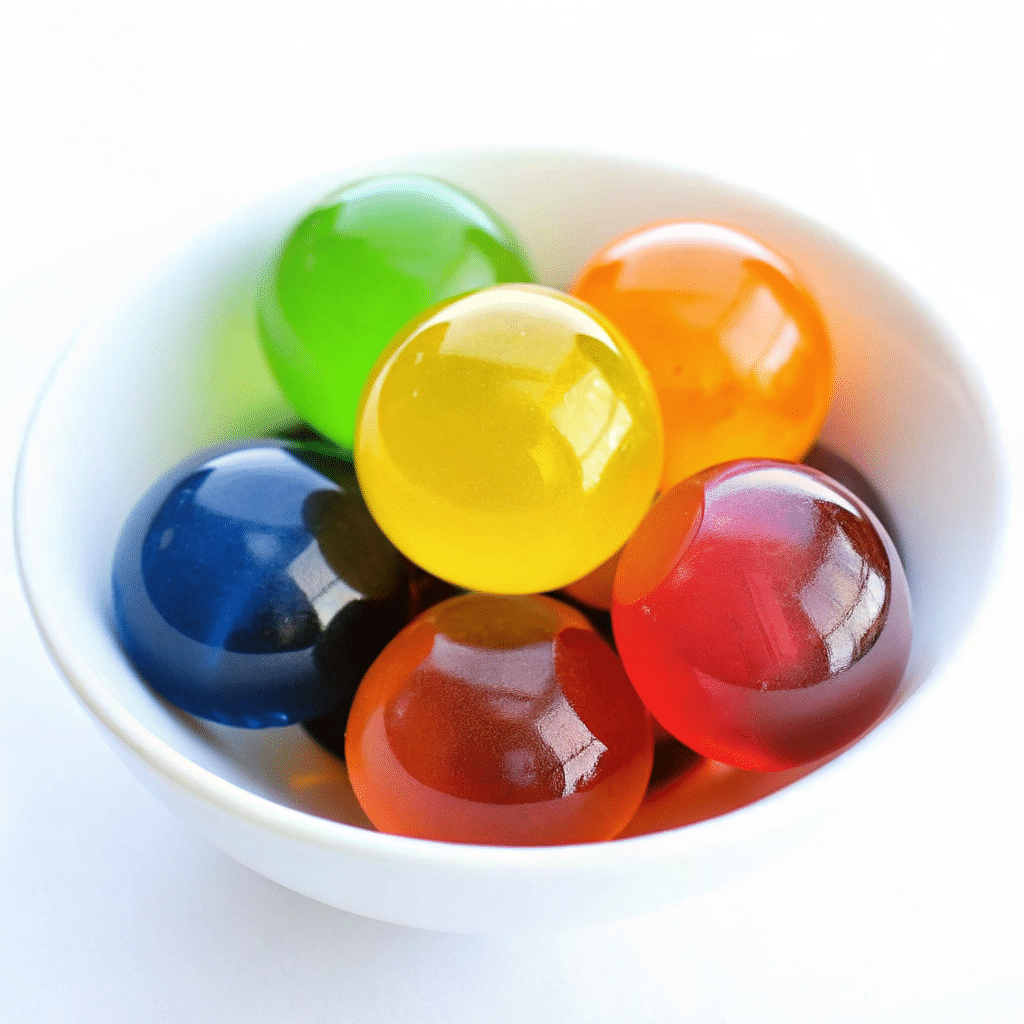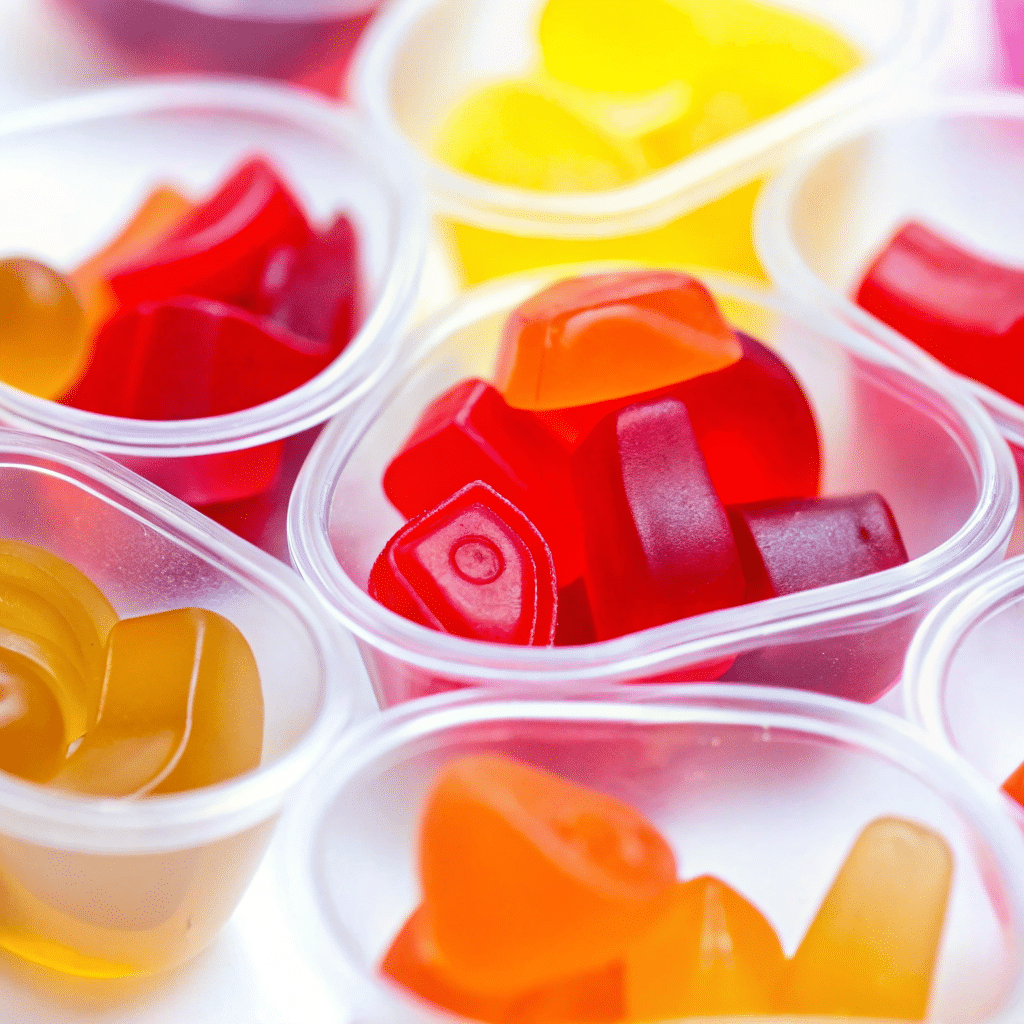I’ll guide readers through a homemade version of how to make jelly drops for dementia that helps boost hydration in loved ones. We’ll begin with a personal anecdote to connect emotionally, then share easy DIY ingredients and step‑by‑step instructions. You’ll learn how these “water‑sweets” compare to branded Jelly Drops, and practical tips for safe serving. I’ll also integrate internal links to related posts seamlessly throughout. By the end, you’ll have confidence making these at home, understanding their benefits, and knowing the science behind water gels for dementia.

Hydration Jelly Drops for Seniors
Ingredients
- 1 cup filtered water or electrolyte water
- 1 teaspoon agar agar powder (or gelatin)
- 1/4 teaspoon powdered electrolyte mix
- 1 teaspoon natural fruit juice optional
- 1/4 teaspoon vitamin C powder optional
Instructions
- Warm the water in a saucepan on low heat.
- Sprinkle agar agar powder into the warm water while stirring constantly.
- Remove from heat and add electrolyte mix, juice, and vitamins.
- Using a dropper, fill silicone molds or drop onto a silicone mat.
- Refrigerate for 30–60 minutes until set. Serve chilled.
Notes
The Story & Intro
I’ll never forget the day my grandmother took one of those bright teardrop “water‑sweets” and smiled she hadn’t held interest in a glass of water for days. That memory sparked my interest in how to make jelly drops for dementia at home. When I began experimenting in my kitchen, mixing simple gels with electrolytes, I thought of her determination and lighthearted spirit. I wanted to replicate a treat that looked inviting, felt easy to hold, and quietly delivered hydration.
In exploring how to make jelly drops for dementia, I learned that commercial Jelly Drops are 95 percent water with added electrolytes and vitamins. They were invented in 2020 by Lewis Hornby after his grandmother, Pat, nearly died from dehydration while living with dementia. Understanding that backstory reinforced my desire to create a simpler DIY version that’s safe, sugar‑free, and customizable.
In this Part, I’ll share my own story and introduce practical details. You’ll see how how to make jelly drops for dementia isn’t just technical steps it’s a way to bring emotional connection, dignity, and hydration support into a loved one’s routine. I’ll also link naturally to related recipes on hydration snacks and elder care tips, like a post about hydration jelly cubes that pairs well, and another on serving healthy semi‑solid treats that complement diced fruit or smoothies.
By the end of this section, you’ll understand the “why” behind the method and feel grounded in the emotional and practical motivations. That foundation will lead into Parts 2 through 4, where we’ll explore ingredients, step‑by‑step preparation, safety measures, and serving ideas. Let’s keep building on this connection and empower you to confidently hydrate your loved ones in a caring, engaging way.
Essential Ingredients and Tools for Jelly Drops
Creating tasty and hydrating jelly drops begins with gathering the right ingredients and tools. I’ll walk you through each component to ensure your DIY version mimics the spirit of how to make jelly drops for dementia safely, simply, and effectively.
Hydration Base
Use filtered water or electrolyte water as your hydration foundation. These options ensure each drop delivers moisture with added electrolytes. When learning how to make jelly drops for dementia, choose low‑sugar or no‑sugar electrolyte blends to avoid unnecessary sweetness.
Gelling Agent: Agar or Gelatin
Depending on dietary preferences, you can use agar (a plant-based alternative) or unflavored gelatin. Agar sets more firmly and works well at room temperature, making drops easier to handle. Gelatin yields softer, melt-in-the-mouth drops. Both are key once you’re learning how to make jelly drops for dementia they create the structure without adding flavor.
Additives: Electrolytes, Vitamins, Flavor
To mimic branded Jelly Drops, add a pinch of powdered electrolyte mix, optional vitamin C, and a few drops of natural fruit juice for taste and gentle color. These ingredients help with appetite stimulation and visual appeal important in how to make jelly drops for dementia recipes.
Kitchen Tools
You’ll need a small silicone mat or silicone drop molds, a clean dropper or pipette for controlling size, and a clean bowl for mixing. You may also want a small funnel for filling molds neatly.
Why these tools matter: when learning how to make jelly drops for dementia, consistent size and shape make the drops more inviting and easier for dexterity-limited hands to grip.
Step‑by‑Step Assembly & Preparation
This section walks you through the exact steps of how to make jelly drops for dementia at home, making sure each stage is simple and clear for anyone to follow.
Mix and Heat the Base
Begin by warming 1 cup of filtered electrolyte water gently on low heat. Sprinkle in 1 teaspoon of agar powder (or gelatin if preferred) and stir constantly until it fully dissolves. The warmth ensures the gelling agent integrates well crucial when learning how to make jelly drops for dementia, since lumps can make drops less appealing.
Add Flavor and Nutrients
Once dissolved, remove from heat. Stir in a pinch of powdered electrolyte mix, a squeeze of natural fruit juice (like apple or grape), and optional vitamin C powder. This boosts appeal and mimics the functional benefits of commercial drops. This nutrient-rich blend captures the essence of how to make jelly drops for dementia without added sugars.
Forming the Drops
Transfer the mixture into a dropper or pipette. Carefully dispense drops onto a clean silicone mat or into small silicone molds aim for pea‑sized spheres or tear-drop shapes. Uniform size matters for grip and portion control, an important aspect of how to make jelly drops for dementia crafting.
Chill and Set
Place the tray in the refrigerator for 30 minutes to an hour until the drops firm up. Agar sets quickly and holds well at room temperature, while gelatin settles softer in the fridge. After setting, gently peel or lift the drops and transfer them to a covered container.
These few steps make the process manageable, consistent, and approachable just the kind of DIY guide readers need when exploring how to make jelly drops for dementia.
Serving Advice, Safety Tips & Practical Usage
When you’re comfortable with how to make jelly drops for dementia, the final piece is ensuring safe serving and gauging effectiveness. Here’s how to offer them thoughtfully.
Serving with Confidence
Offer just 3–5 drops at a time, ideally placed on a small dish or tray. These pea‑sized treats look inviting and are easy to pick up helpful when someone has limited dexterity or reduced appetite. Presenting them in a familiar bowl encourages routine hydration. When I share hydration jelly cubes in my guides, caregivers often mention how small portions reduce overwhelm. This aligns with best practices for how to make jelly drops for dementia use.
Observing Reaction and Hydration
Track fluid intake and monitor how the person reacts. Jelly drops can encourage sipping when other forms of hydration fail. If they seem hesitant at first, pairing a drop with a sip of flavored water or herbal tea can help. Gradual introduction often increases acceptance and success over time.
Safety First
Although jelly drops are soft, supervise first use to ensure swallowing is safe particularly with smaller individuals or those with advanced swallowing difficulties. Use no more than a pinch of sugar or opt for sugar-free electrolytes. Avoid large sizes or overly firm agar gels. These precautions are essential when learning how to make jelly drops for dementia safely and responsibly.
Optimizing Frequency and Routine
Offer jelly drops 1–3 times daily, adjusting based on the individual’s preference and mealtime hydration. Store them refrigerated in a sealed container for up to 3 days. This simple routine promotes consistency and reduces waste, which is key if you’re practicing how to make jelly drops for dementia in care routines.

FAQs
What are the ingredients in Jelly Drops?
Commercial Jelly Drops typically include 95% water, gelling agents (like agar), natural sweeteners, electrolytes, and added vitamins. If you’re exploring how to make jelly drops for dementia at home, a simpler version uses filtered water, agar or gelatin, a natural electrolyte mix, and optional fruit juice for flavor.
Do Jelly Drops actually work?
Yes, they’ve been clinically supported as effective in encouraging hydration for people with dementia. The appealing texture, color, and bite-sized design make them more enticing than plain water. When caregivers learn how to make jelly drops for dementia, they often see noticeable improvements in fluid intake and mood.
Are Jelly Drops good for people with dementia?
Absolutely. For individuals with dementia who may forget to drink or refuse liquids, jelly drops offer a fun, accessible, and low-pressure way to hydrate. They’re especially helpful during hot weather or illness. Learning how to make jelly drops for dementia empowers caregivers to support hydration with dignity.
What are water gels for dementia patients?
Water gels are similar to jelly drops gelled forms of water used to hydrate people who struggle with regular drinking. Unlike flavored gels, Jelly Drops include color and vitamins. If you want a functional homemade option, see my article on natural hydration gel snacks as a companion to this guide.
Conclusion
Learning how to make jelly drops for dementia at home is more than a recipe it’s an act of care. With a few affordable ingredients and simple tools, you can bring hydration, color, and a little joy to someone’s day. From understanding the science behind their appeal to customizing flavor and texture, this process invites connection and ease. Whether you’re caring for a loved one or assisting in a facility, these homemade drops are a simple, effective tool for boosting fluid intake. I hope this guide inspires you to try them today and explore more in our growing collection of elder-care recipes and hydration ideas.
While jelly drops are a fun and effective way to encourage fluid intake, they work best when combined with other everyday foods and drinks that support hydration. If you’d like more ideas, check out my guide on 7 hydrating foods for dementia patients, where I share simple options like soups, fruits, and herbal teas that can make hydration easier and more enjoyable.


